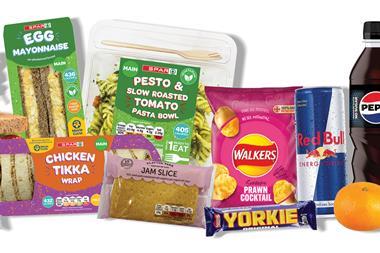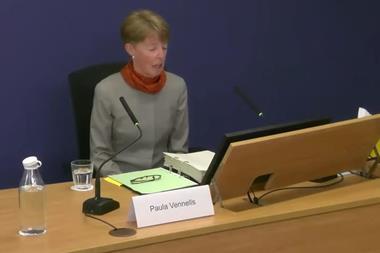Why is it that certain customer groups flock to some stores? Kate Miller learns the secrets of customer satisfaction
If you’ve ever searched for something on Amazon, and I’m guessing most of you have, you’ll know that after a few uses you start to get the slightly unnerving feeling of being watched. Soon, instead of just offering you what you’ve asked for you’ll start to be offered things it thinks you might like. And as much as it might want to make us scream Patrick McGoohan-like ‘I’m an individual, not a number’, there is part of us that has to begrudgingly admit that they often get it right.
For as much as we like to think of ourselves as free-thinking individuals, we are, primarily, creatures of habit who do little more than adapt our habits according to which hat we happen to be wearing at any given time. For instance, an office worker may well visit the same sandwich shop every day while at work, but when she’s in ‘mum mode’ may favour a different place for lunch which can accommodate a buggy, or caters for children. Different businesses for different needs, but each is an exhibition of habitual behaviour which will be repeated regularly.
“You don’t have to sell things to people - you just stock things they want to buy.”
Mike Skerrett, Spar Dolwyddelan
This may be all very disheartening for our self-image, but it is great news for businesses. Because it’s the truly successful businesses that take note of this type of behaviour and adapt accordingly to take advantage of particular customer groups.
But how do these businesses pick up these customers and, more importantly, how can you become the habit for these customer groups?
According to Tom Fender, managing director of HIM, while targeting particular customer groups offers retailers a relatively simple way of both differentiating themselves from the competition and expanding their customer base, it does takes effort. “Retailers increasingly have to accept that some kind of investment has to be made to keep a business moving forward,” says Fender. “In this climate a business standing still might as well be moving backwards.”
However, he believes that the investment doesn’t necessarily have to be solely a financial one, with time and resources having much better returns.
Ken Banfield, Premier retailer at Embankment Stores in Wellingborough, Northamptonshire, says that it’s the little bit of effort that he and his wife Margaret have put in learning a few phrases in his new customers’ native languages that have kept them coming back and made a difference to his trade.
“Sometimes you’ll have a request and have to make a call whether to stock the product or not. The hot dog sausages pickled in a jar sell well, so we’ve kept those on.”
Ken & Margaret Banfield, Embankment Stores, Wellingborough
In recent years the store has seen about 40 Eastern European people settle in the area, and Ken has gone the extra mile to make them feel welcome and ensure that they see his store as their local. As well being able to enquire whether a carrier bag is needed in both Polish and Latvian, he keeps a Polish phrase book under the counter in case the conversation really starts to flow.
“I’m not some sort of linguist, but I can say hello and goodbye and a few phrases, and they really appreciate it,” says Ken. “Sometimes they’re really taken by surprise and it takes a few seconds for it to click that you’ve spoken to them in their own language.”
He and Margaret also speak a little Welsh, much to the astonishment of a group of Welsh builders who had come in to buy sandwiches from the store’s bake-off. “The fact that I spoke a few words of Welsh to them meant that they came back in every day for the fortnight that they were in the area,” reveals Ken.
He has also changed his product mix slightly to cater for his new customers, making sure that he has a good range of meats such as sliced salami and Polish sausage. He finds that these customers also like to cook with fresh vegetables rather than pre-packed and love freshly baked bread, so he makes sure these are well stocked.
Foods such as hot dog sausages pickled in a jar were requested by his customers, who favour them over the fresh cooked hotdogs he sells to his English customers. “Sometimes you’ll have a request and have to make a call whether to stock the product or not. The hot dog sausages pickled in a jar sell well, so we’ve kept those on.”
He says that his Eastern European customers are distinguishable from the moment they come in. “The first thing they do is say hello to us, and the second is to pick up a basket, whereas the English tend to wonder round with armfuls of food, dropping stuff! The Poles are extremely polite and tidy customers and are very welcome.”
The key to attracting certain groups, says Ken, is to identify them and mirror them. “Be to them what they are looking for in a store - we have tried hard to adapt our business to make it the most comfortable shopping experience.”
Mike Skerrett used his 30 years of experience in marketing, gained prior to becoming a retailer, to help him target a particular customer group at his Dolwyddelan Spar store in Conwy, Wales. When Mike took over the shop at the foot of Snowdonia eight years ago he felt it was missing the opportunity presented by the hundreds of tourists who flocked to the area each year. Immediately he began by assessing what was missing in the local area. He introduced a place outside the store for walkers to have a cup of tea - in china cups, no less - by setting out some tables and chairs and put in an awning for them to keep dry in bad weather. “We wanted to differentiate ourselves and instead of a bean-to-cup Starbucks-type operation we gave hot drinks an old-fashioned feel with real cups.”
He also made sure he was well stocked in energy bars, snacks and sandwiches, which walkers could take onto the mountain. He also began to stock Welsh-branded products and furry Welsh dragons, which proved a big hit with visiting children from the local outdoor training centre who, according to Mike, queue outside to get them.
Mike calls it ‘selling the dragon’. “Most Welsh products are branded and the tourists love it because it’s something to take home. But the locals love it as well because it’s local.” By tweaking his product mix slightly to target a specific group, Mike estimates that his turnover has shot up by 60%, giving him enough confidence to allocate more space to them in a refit of the 1,000sq ft store two years ago. He now has about two-and-a-half metres of tourist lines.
He explains: “When we had the store refit we built upwards - adding a sixth shelf - and we cram in many more lines than an equivalent shop of this size. For instance, we sell three different types of local bacon and two different types of local sausage, and customers love it.”
He also used his initiative to engage a local photographer friend to take some photos of the village to turn into postcards. “They sell like hot cakes” he says.
Mike believes that the key to targeting particular groups is to identify what’s not being offered, then stock it and make sure you tell them you’ve stocked it - it’s as simple as that. “You don’t have to sell things to people - you just stock things they want to buy.”
Paul Fisher of Fisher’s in Gerrards Cross, Buckinghamshire, didn’t set out to attract a particular demographic into his store, but admits that the needs of the older population of the town have influenced the way that his store trades which, in turn, has prompted more people of that particular group to come to his store. “We make sure that we have all the old-fashioned brands that they like. Matteus Rosé wine, for instance, sells by the bucketload, as do things such as Brasso Silver Polish.”
When customers can’t find a brand they like, Paul tries to track it down for them. “With bigger stores they have to play the numbers game and delist what 80% of customers don’t buy. But the 20% - that’s our market, the people who can’t get things they want because the multiples have delisted it.”
It’s an ethos that is instilled in the entire staff. “They genuinely care for their customers,” says Paul. One example Paul recalls is a customer who was very upset after losing his wife. He found the smell of a particular polish which she had used every day brought him some comfort, but he had run out. When Paul tried to track it down he found that it was pretty much delisted by everyone so he posted a message on the Nisa members’ message board and one of the buyers eventually tracked down six cases in Eastern Europe. “It was just about the last six cases left in the world,” says Paul. “In that instance we gave the whole lot to him - it was just a very moving story.”
He acknowledges, though, that his type of store doesn’t appeal to everyone. “A busy mum with kids might find that the Tesco down the road is more appropriate, and it’s often hard to get younger shoppers to engage, but older customers really respond to good customer service.”
The store has a delivery service which is extremely popular with older customers: “We’ve had letters from relatives of customers who have died, saying that if it wasn’t for us they would have died years ago - our driver was the only point of contact they had for the last few years of their lives. He gets very involved and often ends up going in and helping out, changing lightbulbs and even reading post for them. It’s the kind of customer service that breeds community.”
HIM’s Tom Fender says that targeting particular groups is something most retailers can do, with a little bit of work. The most important thing, says Fender, is for retailers to engage with target groups by finding out where they are and what they want.
“The best person to do this is the retailer himself,” says Fender. “But to do this they need to get passed that loathing of leaving the shop and get out from behind the till and into the community.”
Whether it’s by leafleting local building sites, campuses or churches, using social media or including signage in the target group’s language, it all helps get the message across.
“You can think of it in terms of helping your customers find solutions to their problems - to be the pivotal point in that particular community,” Fender says.
And he adds: “If you become well-known for something people will come from far and wide.” • I




























1 Readers' comment